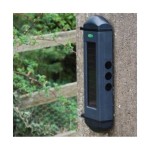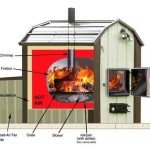Growing Bromeliads Outdoors: A Comprehensive Guide
Bromeliads are captivating and exotic plants that thrive in outdoor environments. These vibrant plants offer a striking combination of foliage and flowers, adding a touch of the tropics to your garden. Whether you're a novice gardener or a seasoned plant enthusiast, nurturing bromeliads outdoors can be a rewarding experience. Here's a comprehensive guide to growing these stunning plants in your backyard:
1. Selecting the Ideal Environment
Bromeliads prefer warm, humid climates with filtered sunlight. Choose a spot that receives ample sunlight, but avoid exposing them to direct midday sun. They thrive in moist but well-drained soil, so amend your soil with organic matter like compost or peat moss to enhance drainage.
2. Planting
Plant bromeliads at the same depth they were in their containers. Dig a hole twice the width of the root ball and gently loosen the roots. Place the plant in the hole and fill in the space with soil, tamping down gently to remove any air pockets. Water thoroughly.
3. Watering
Water bromeliads regularly, especially during hot weather. Direct water into the central cup of the plant, as the leaves absorb moisture from the air. Avoid overwatering, as it can lead to root rot. Reduce watering during winter.
4. Fertilizing
Fertilize bromeliads lightly during their growth season. Use a balanced liquid fertilizer diluted to half strength and apply it to the central cup of the plant. Avoid overfertilizing, as this can damage the roots.
5. Mulching
Mulching around bromeliads helps retain moisture, regulate soil temperature, and suppress weeds. Use a layer of organic mulch, such as bark chips or compost, around the base of the plant, but avoid burying the crown.
6. Protecting from Frost
Most bromeliads are not frost-hardy, so it's essential to protect them from cold temperatures. If you live in an area with occasional frosts, cover the plants with frost cloth or bring them indoors until the danger of frost has passed.
7. Pruning
Pruning is generally not necessary for bromeliads, but you can remove dead or damaged leaves or faded flowers to maintain a healthy appearance. Avoid removing the central cup, as this is essential for water storage.
8. Propagation
Bromeliads can be propagated through offsets or pups that form around the base of the mother plant. Carefully remove these offsets when they have developed their own root system and plant them in individual containers.
9. Common Pests and Diseases
Bromeliads are generally not susceptible to many pests or diseases, but they can be affected by mealybugs, scale, and root rot. Regular monitoring, early detection, and appropriate treatments can help control any potential issues.
10. Enjoying the Beauty
Bromeliads offer a captivating display of colors and textures throughout the year. The vibrant flowers and foliage create a striking contrast, making them a focal point in any outdoor space. Enjoy the beauty of these tropical plants and let them bring a touch of the exotic to your garden.

How To Care For Bromeliads

How To Grow Bromeliads Outdoors Urban Garden Gal

With Proper Care Bromeliads Can Thrive In North Florida

Bromeliad

How To Grow Bromeliads Outdoors Urban Garden Gal

Bromeliads In The Landscape Rockledge Gardens

Bromeliad Care Top Tips On Keeping Them Happy

Three Tips For Growing Bromeliads Outdoors

How To Grow And Care For Bromeliads

Bromeliads Tips For Growing Indoors Outdoors And In Pots
Related Posts








